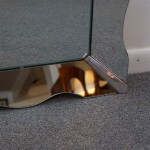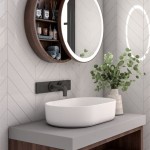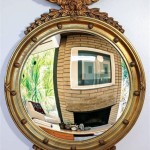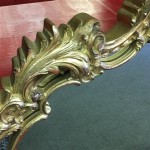How to Transform a Window into a Mirror: A Comprehensive Guide
Transforming a window into a mirror can be an effective way to enhance privacy, increase natural light reflection within a room, and create a sense of spaciousness. This process, while achievable through various methods, requires careful planning and execution to achieve a satisfactory and durable result. The following guide outlines several techniques, detailing the necessary materials, procedures, and considerations for each approach.
Understanding the Available Methods
There are several methods available to convert a window into a mirror-like surface. These range from applying reflective films to using specialized paints designed for glass surfaces. The choice of method depends on factors such as budget, desired level of reflectivity, durability requirements, and the existing condition of the window. It is crucial to consider these factors before proceeding with any specific technique.
One-way mirror film offers a practical solution for those seeking privacy while maintaining the ability to see outside during daylight hours. This type of film works by reflecting more light on one side (the outside) than it transmits. The interior side appears transparent, allowing occupants to see out, while the exterior side presents a reflective surface that obscures the view inside. It's essential to understand that this effect relies on a significant difference in light intensity between the two sides; at night, when the interior is brightly lit and the exterior is dark, the effect reverses, and the interior becomes visible from the outside.
Mirror paint provides another option, offering a more permanent and opaque reflective surface. This type of paint typically consists of multiple layers, including a primer, a reflective coat, and a protective topcoat. The application process is more involved than applying film, but it yields a durable and highly reflective finish. Mirror paint is particularly suitable for situations where complete privacy and a high degree of reflectivity are desired.
Specialized reflective coatings, often used in industrial applications, can also be applied to glass surfaces to create a mirror effect. These coatings typically require specialized equipment and expertise for application and are generally not suitable for DIY projects. However, for large-scale or high-performance applications, professional application of such coatings may be the most effective solution.
Detailed Steps for Applying One-Way Mirror Film
Applying one-way mirror film is a relatively straightforward process that can be completed by most individuals with basic DIY skills. Success depends on meticulous preparation and careful adherence to the application instructions.
Materials Required:
- One-way mirror film (sufficient to cover the window surface with extra allowance)
- Spray bottle
- Dish soap
- Distilled water
- Squeegee (preferably with a soft, flexible edge)
- Clean, lint-free cloths
- Measuring tape
- Utility knife or scissors
- Heat gun or hair dryer (optional, for smoothing out stubborn wrinkles)
Preparation: The first step is to thoroughly clean the window surface. Any dirt, dust, or debris will interfere with the film's adhesion and create imperfections in the reflective surface. Mix a solution of distilled water and a few drops of dish soap in the spray bottle. Spray the entire window surface liberally and wipe it clean with a lint-free cloth. Repeat this process until the window is completely free of contaminants.
Measuring and Cutting: Measure the window dimensions accurately. Add an extra inch or two to each side to allow for trimming after application. Cut the mirror film to the measured size using a utility knife or scissors. Work on a clean, flat surface to avoid scratching the film.
Application: Peel off the protective backing from the mirror film, exposing the adhesive side. Spray the adhesive side of the film liberally with the soap and water solution. This will prevent the film from sticking immediately and allow you to reposition it as needed. Also, spray the window surface again with the soap and water solution.
Carefully align the film with the window edges. Gently press the film onto the window surface, starting from the top and working your way down. Use the squeegee to remove air bubbles and excess water. Apply firm, even pressure, working from the center outwards. Overlap each stroke of the squeegee to ensure complete contact between the film and the glass.
Trimming and Finishing: Once the film is applied and the majority of the water is removed, use a utility knife to trim the excess film from the edges of the window. Run the knife along the window frame to create a clean, precise cut. Be careful not to scratch the glass. Use a clean, dry cloth to wipe away any remaining water or soap solution. If any stubborn air bubbles or wrinkles remain, use a heat gun or hair dryer on a low setting to gently warm the film and then squeegee it smooth.
Curing: Allow the film to cure for several days. Avoid cleaning the window during this time. The curing process allows the adhesive to fully bond to the glass, resulting in a more durable and long-lasting application.
Applying Mirror Paint: A Multi-Layer Process
Applying mirror paint is a more intricate process that requires careful attention to detail and multiple layers of specialized paint. This method offers a highly reflective and opaque surface, ideal for situations where complete privacy and a high degree of reflectivity are desired.
Materials Required:
- Mirror effect paint system (including primer, reflective coat, and topcoat)
- Glass cleaner
- Lint-free cloths
- Painter's tape
- Drop cloths or plastic sheeting
- Sandpaper (fine grit)
- Spray gun or paint brush (depending on the type of paint)
- Respirator or mask
- Gloves
Preparation: Thoroughly clean the window surface with glass cleaner and a lint-free cloth. Ensure the surface is completely free of dirt, grease, and other contaminants. Lightly sand the glass surface with fine-grit sandpaper to provide a better bonding surface for the primer. Wipe away any sanding dust with a clean cloth. Mask off the surrounding area with painter's tape to protect it from overspray. Cover the floor and nearby furniture with drop cloths or plastic sheeting to prevent paint spills.
Applying the Primer: Apply a thin, even coat of primer to the window surface using a spray gun or paint brush. Follow the manufacturer's instructions for the recommended drying time. The primer serves as a base coat that promotes adhesion of the reflective coating.
Applying the Reflective Coat: Once the primer is completely dry, apply the reflective coat according to the manufacturer's instructions. This coat is responsible for creating the mirror-like effect. Typically, multiple thin coats are required to achieve optimal reflectivity. Allow each coat to dry completely before applying the next. Use a spray gun for a smoother, more even finish. Ensure adequate ventilation while applying the reflective coat, and wear a respirator or mask to protect yourself from fumes.
Applying the Topcoat: After the reflective coat is completely dry, apply a protective topcoat to seal and protect the reflective surface. The topcoat enhances the durability of the mirror finish and prevents it from scratching or tarnishing. Apply the topcoat in thin, even layers, following the manufacturer's instructions for drying time. As with the reflective coat, ensure adequate ventilation and wear a respirator or mask during application.
Curing: Allow the painted surface to cure completely for the recommended time specified by the paint manufacturer. Avoid touching or cleaning the surface during the curing process. The curing process allows the paint to fully harden and bond to the glass, resulting in a durable and long-lasting mirror finish.
Considerations for Choosing the Right Method
Selecting the appropriate method for transforming a window into a mirror requires careful consideration of several factors, including the desired level of reflectivity, the intended use of the space, and the existing condition of the window.
Privacy Requirements: If the primary goal is to enhance privacy while maintaining the ability to see outside during daylight hours, one-way mirror film is a suitable option. This film allows occupants to view the outside world while preventing outsiders from seeing in, provided there is a significant difference in light intensity between the two sides.
Reflectivity and Opacity: For situations where complete privacy and a high degree of reflectivity are desired, mirror paint provides a more effective solution. This method creates an opaque and highly reflective surface that completely blocks the view from both sides of the window.
Durability and Longevity: Mirror paint generally offers greater durability and longevity compared to one-way mirror film. The multi-layer paint system creates a robust and resilient finish that is resistant to scratches and environmental factors. However, the application process is more involved and requires more skill and attention to detail.
Cost: One-way mirror film is typically more cost-effective than mirror paint, especially for smaller window areas. The materials required for applying film are relatively inexpensive, and the application process is less labor-intensive. Mirror paint systems, on the other hand, can be more expensive, and the application process requires more time and effort.
Window Condition: The condition of the window can also influence the choice of method. If the window glass is damaged or scratched, applying mirror paint may be a better option than applying film, as the paint can help to conceal imperfections in the glass surface. However, if the window is in good condition, either method can be used effectively.
Reversibility: One-way mirror film is generally more reversible than mirror paint. The film can be removed from the window surface without causing permanent damage, although it may leave behind some adhesive residue that needs to be cleaned. Mirror paint, on the other hand, is a permanent coating that cannot be easily removed without damaging the glass surface.

How To Turn An Old Window Into A Mirror Pine And Prospect Home

How To Turn A Vintage Window Into Mirror

How To Turn A Vintage Window Into Mirror

How To Turn A Vintage Window Into Mirror An Oregon Cottage

Turning An Old Window Into A Mirror

How To Turn A Vintage Window Into Mirror An Oregon Cottage

Turning An Old Window Into A Mirror Easiest Diy Ever

How To Turn An Old Window Into A Mirror Pine And Prospect Home

How To Create Your Own Diy Window Mirror For Just 10 Ideal Home

Salvaged Window Turned Farmhouse Mirror The Weathered Fox








